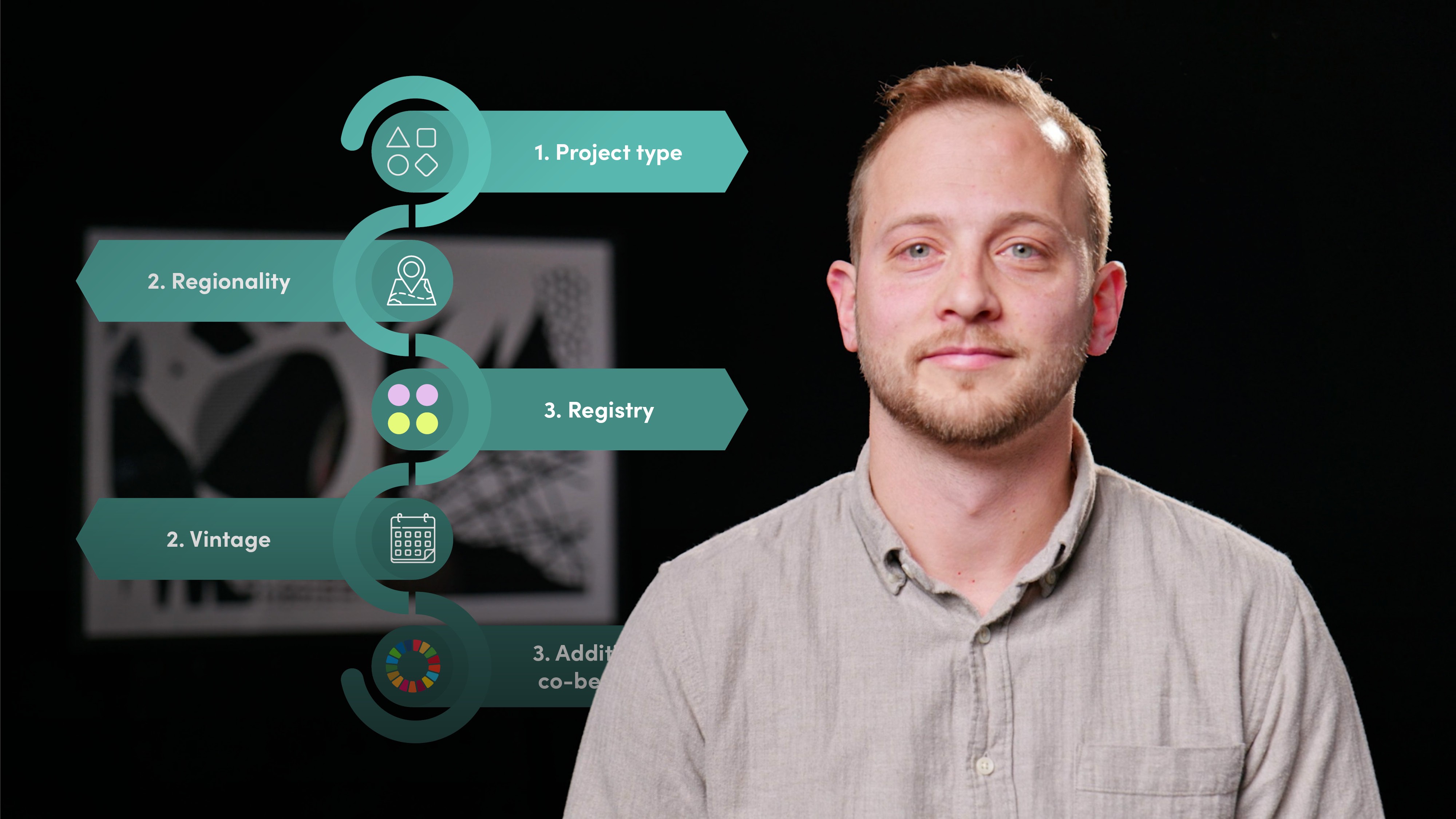
How to Select Carbon Credits

Sam Hope
5 years: Carbon Markets
If you've ever wondered what a carbon credit is, or how they can vary according to region and vintage, you've come to the right place. Join Sam Hope as he explores these questions in depth.
If you've ever wondered what a carbon credit is, or how they can vary according to region and vintage, you've come to the right place. Join Sam Hope as he explores these questions in depth.
Subscribe to watch
Access this and all of the content on our platform by signing up for a 7-day free trial.

How to Select Carbon Credits
8 mins 31 secs
Key learning objectives:
Define a carbon credit
Outline the offset selection framework
Understand how the framework affects price
Overview:
A carbon credit represents 1 metric tonne of carbon dioxide reduced or removed from the atmosphere. A verified credit can be used against an organisation’s carbon footprint to offset the company's negative climate impacts. There are many options to consider when buying carbon credits which affect their value, including: project type (e.g. agriculture, renewable energy, waste disposal), regionality (where the project is located), registry (who the credit is registered and verified with), vintage (the year the benefit was delivered), and additional co-benefits (such as the UN Sustainable Development Goals).
Subscribe to watch
Access this and all of the content on our platform by signing up for a 7-day free trial.
What is a carbon credit?
A carbon credit represents 1 metric tonne of carbon dioxide reduced or removed from the atmosphere. A verified credit can be used against an organisation’s carbon footprint to offset the company's negative climate impacts.
What do you need to consider when buying carbon credits?
- Project type
- Regionality
- Registry
- Vintage
- Additional co-benefits
How do these options affect credit pricing?
1. Project type
Carbon offsets can be generated by different types of projects, each classified under the following categories (in order of market share):
- Agriculture, forestry and other land use (42%)
- Renewable energy (33%)
- Chemical and industrial processes including energy efficiency and fuel switching (12%)
- Waste disposal/management (6%)
- Household/community devices such as cookstoves (6%)
- Transportation, carbon capture and storage and long-lived carbon removal (<1%)
Credits can also be categorised into two classes: carbon reduction credits and carbon removals.
2. Regionality
Prices can vary materially for the same project in a different location due to implementation and project delivery costs, meaning two projects of the same type with similar credentials could have drastically different pricing. Desirable projects include those located in niche territories, located within the operating jurisdictions of listed corporations and European projects.
3. Registry
Registries provide the framework to oversee the registration, verification and credit issuance of projects. The traditional big four registries are:
- VERRA
The single largest registry, which is global and mostly oriented towards nature-based solutions.
- Gold Standard
Mostly specialised in energy efficiency and technology-based solutions.
- The Climate Action Reserve (CAR) and the American Carbon Registry (ACR)
US-based registries which almost exclusively register projects within the North American region.
4. Vintage
Each carbon credit is marked with a vintage year, which dates the unit. The vintage of a carbon credit corresponds to the year in which the environmental benefit of that credit was delivered. In the voluntary carbon market, credits tend to become less desirable as vintages age. The perception of older vintages being worth less creates a discount for buyers wanting to support certain projects in line with their procurement budgets.
5. Additional co-benefits
Offsetting projects can also generate other positive impacts referred to as co-benefits. The United Nations’ Sustainable Developments Goals is the most widely adopted framework to demonstrate this type of additional value. While not directly linked to the pricing or integrity of the carbon credit, the more SDGs associated with a project, the more marketable the project is to end users.
Subscribe to watch
Access this and all of the content on our platform by signing up for a 7-day free trial.

Sam Hope
There are no available Videos from "Sam Hope"





























